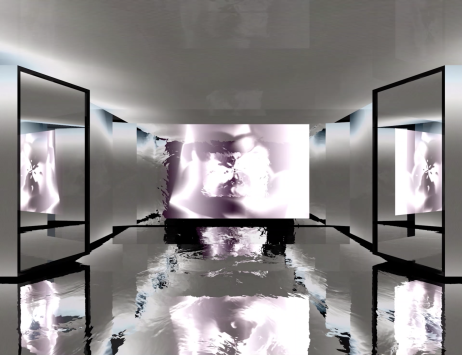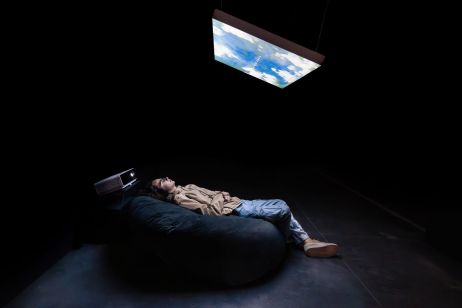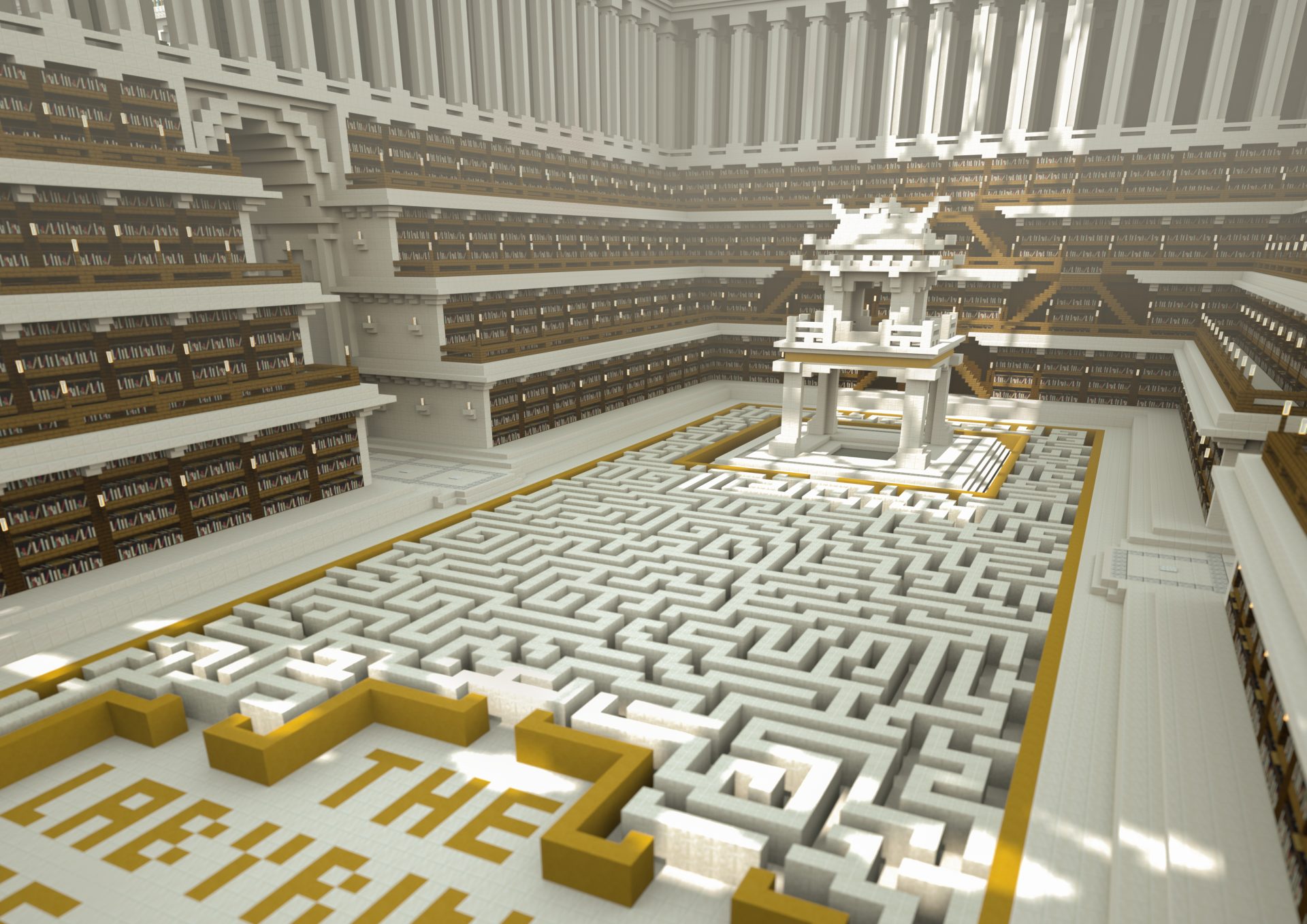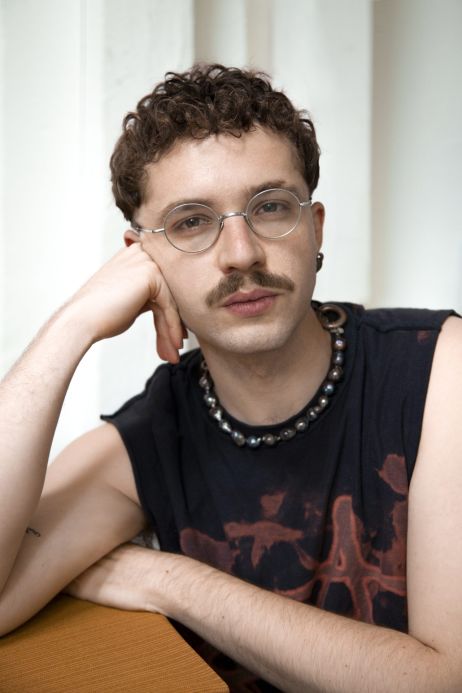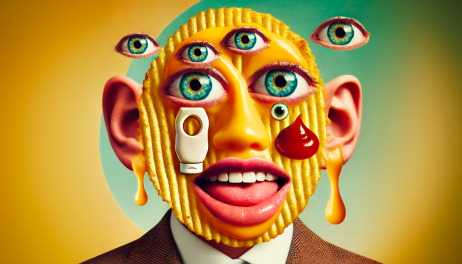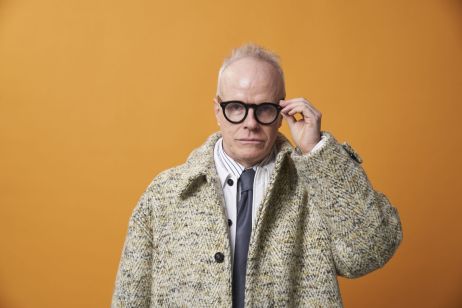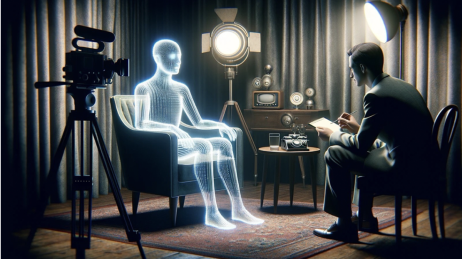In the wake of the metaverse and new virtual or extended realities, are immersive works destined to give new impetus to the exhibition of digital works online? The organization of events such as the Betacamp XR Streaming Party provides the first clues to an artistic direction that reflects the evolution of audiovisual culture towards ever more technological axes. However, it’s impossible to ignore the essential relationship between artists/creators and the public.
Today, the networking and circulation of data enabled by digital technology and the Internet open up new possibilities for the display of digital works, particularly in the field of metaverses, virtual environments and their corollary, immersive virtuality, incorporating the new digital world of extended reality. The emergence of new virtual reality headsets such as Oculus Quest, which can be connected to the computer, linked to the web and used autonomously, offers the capacity to experience and explore remote universes, directly from home if you have the means to equip yourself properly, to spectators/users ever more inclined to break down the barriers of physical exhibition, located in one place at a time.
Pioneering structures are now beginning to think about new ways of disseminating and experimenting with online and virtual digital pieces. Last July, as part of the European project Realities in Transition – a joint action to promote XR productions and new narratives around the principle of extended reality or XR – the Spanish L.E.V. and Belgium’s iMAL organized the first Betacamp XR Streaming Party: a programming oriented and festive online celebration spread over three days, showcasing various advances in distanced XR potential, from VR works and devices to live performances, exchanges and guided tours of selected immersive environments. This online event follows on from L.E.V.’s previous research and performance initiatives in the field of XR – for example, the Planet LEV initiative in 2020.
“XR environments already attract a very diverse audience, but we really wanted to reach an even wider audience here,” explains Jesús Jara López of L.EV. That’s why everything was streamed entirely on YouTube, for greater accessibility. That said, other activities of course needed to be experienced in a more immersive way, in particular the guided tours which took place via the VRChat platform. It was largely because of this diversity of target audience that we built a broad program, bringing together several VR technologies, such as 360° Video, with the presentation of the Space Popular environment, video games, with the presentation of the independent media The Uncensored Library via the Minecraft game server, virtual reality, with VRChat, and other mobile platforms such as the collaboration between the 3D chat community Club Cooee and the RPG program NeuroXcape”.
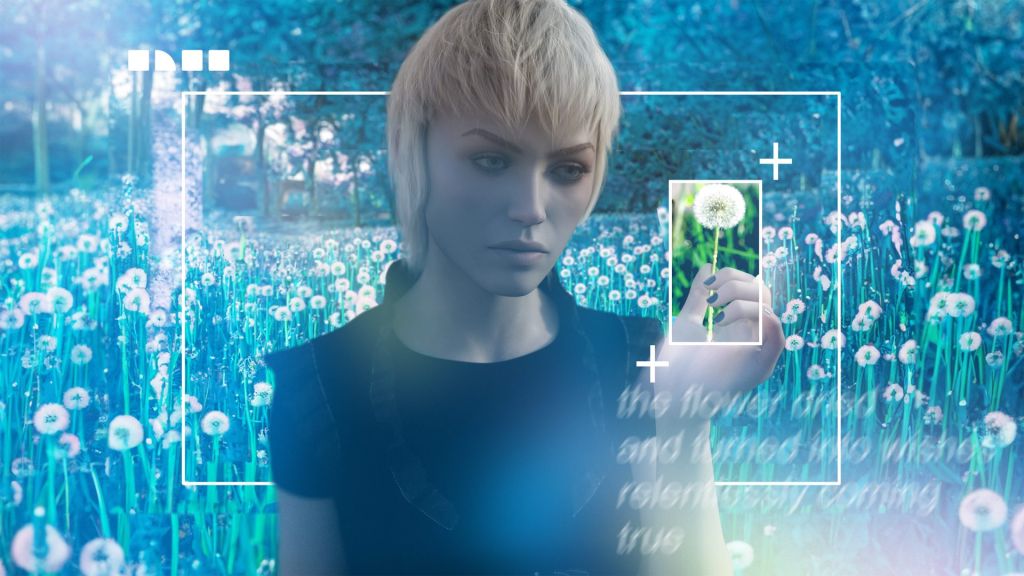
VR tools or the continuity of multimedia cultural history
For the L.E.V team, it’s important to make the public understand that XR tools are part of a natural process in the evolution of multimedia technologies. This is undoubtedly the best way to prepare the public for technological changes that are bound to have an impact on the way digital artworks are accessed in the future. In recent years, we’ve seen this marketing trend presenting XR tools as something totally new,” points out Jesús Jara López. We prefer to explain that technology is a constantly evolving field, which puts the arrival of XR tools in a historical perspective. XR technology is just the continuation of audiovisual culture, coming after cinema or television, and the artists who use it are pursuing the same visionary approach. It’s essential to be able to put this forward in the broadest, most public way possible.”
Under these conditions, it’s clear that online accessibility is essential, in the sense that it testifies to a strategy of popularization and promotion of a technological tool destined to become widespread in usage. However, we must bear in mind the technical complexities involved in organizing such an event, as well as the public’s mistrust, as the XR Streaming Betacamp ultimately attracted a limited number of participants: around a hundred people for the YouTube stream, and a handful for the immersive VR approach itself.
“XR technology is just the continuation of audiovisual culture, coming after cinema or television, and the artists who use it are pursuing the same visionary approach.”
We would have liked to have had more VR participants, but we have to admit that this approach is still new for a digital art event like the L.E.V. Festival, or for structures like ours,” adds Jesús Jara López. We are first and foremost a structure that organizes physical events, concerts, audiovisual installations and IRL exhibitions. We don’t yet have the necessary hindsight to know what the real impact of these online events will be. But there’s no denying that this is the direction we’re heading in. The Internet is the home of the metaverse. It would be contradictory to talk about XR realities and not work, or seek to meet, directly within virtual reality.”
According to Jesús Jara López, virtuality would also have two advantages: it would offer more ecological environments, especially when compared to physical events, and it would enable online exhibitions to reach a wider audience. With lucidity, he continues: “We probably still need to work harder to broaden our base community, because the level of commitment, of involvement, is undoubtedly higher than that required for a physical event, where the act of presence is essential. There’s a debate going on at the moment, with pros and cons. But I firmly believe that, in the context of our European program, there are only good reasons to continue thinking about it through events like Betacamp.”
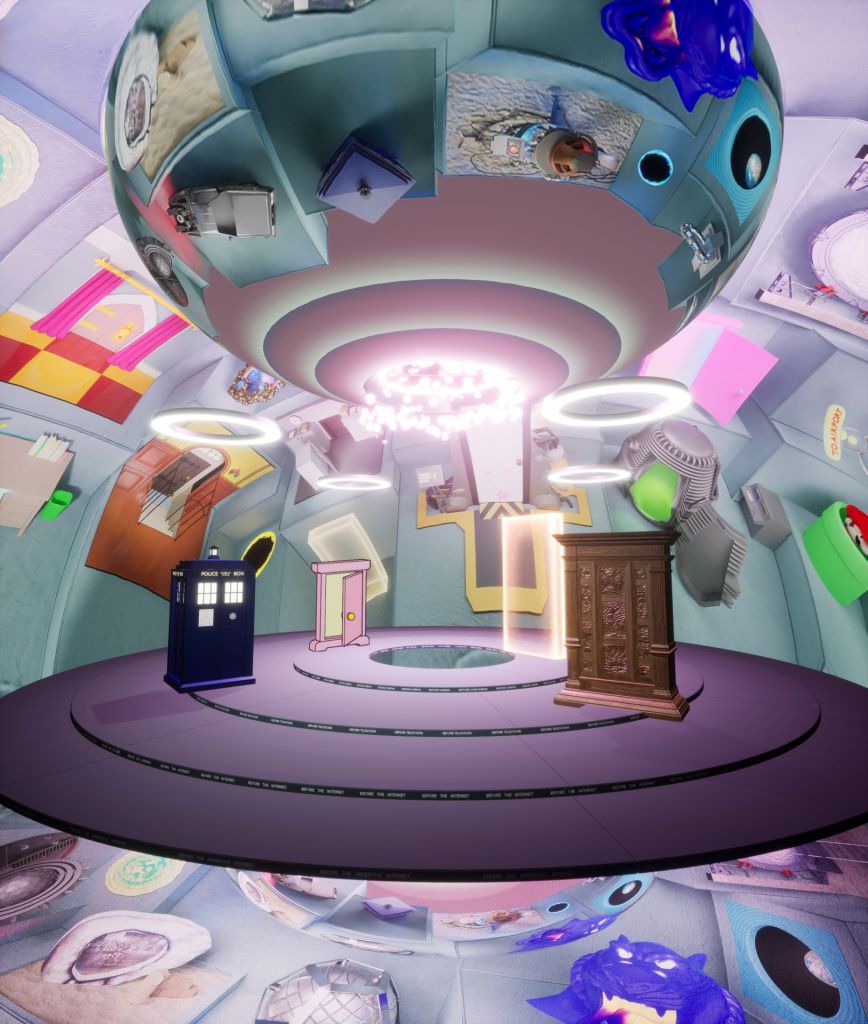
Artists: the first vectors of immersive online creation
The involvement of artists who are more familiar with these XR environments, many of them from the metaverse, is therefore essential to involve the digital art world in uses that are beginning to emerge in other creative environments – Jesús Jara López thus claims the influence of virtual cultural events such as “Boiler Room, gaming platforms on YouTube, live streaming marathons/hackatons [the L.E.V. Festival recently organized one) or VR events such as Laval Virtual”.
The three-day Betacamp XR Streaming Party featured a 360° video presentation of the VR installation The Portal Galleries by creative studio Space Popular. Also featured, a talk mode presentation of artist-avatar LaTurbo Avedon’s work in their own virtual environment, Dandelion. However, the greatest potential was undoubtedly to be found in the guided tours led online by artists MetaRick/ Rick Treweek(The Uncanny Alley) and Kevin Mack(Namuanki). Two award-winning artists, the former at the Venice Film Festival and the latter at the American Oscars, whose way of presenting their worlds seduced most of the participants in the experience.
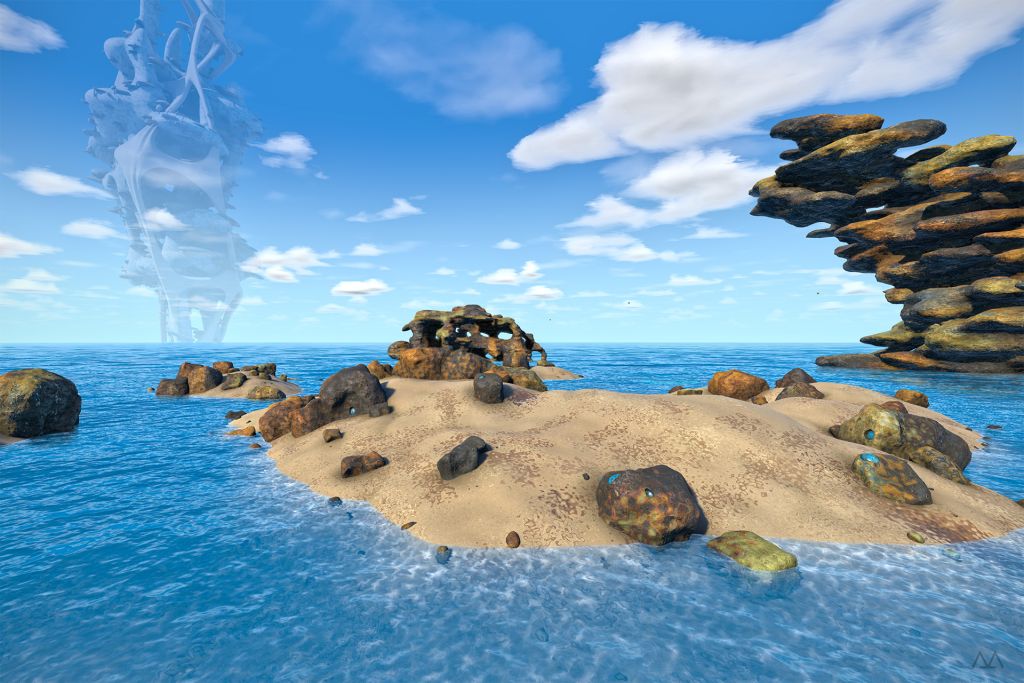
A mode of expression in search of fluidity
With Namuanki, a virtual world that can be freely visited by VRChat users/visitors, Kevin Mack is developing a world that resembles a video game engine matrix, highly colorful and de facto heavily tinged with psychedelic influences, in which art, nature, but also criteria of well-being – the American artist evokes the relaxing and anti-stress side of his universe – abound. For him, being able to guide visitors into his world from a distance is an essential part of developing direct artistic mediation between artist and viewer, via his new online exhibition modalities. “I’m really excited about the potential of these immersive virtual worlds and the metaverse more broadly. To be able to share this content with a potentially huge audience is even more exciting, he admits. The current context is very promising, but there are still a number of hurdles to overcome, mainly technological. We still need to be able to develop the tools to perfect the realism of these universes and attract an even wider audience.”
“We have to realize that the virtual world is nothing more than another form of reality. Different, of course, but just as real. ”
Designer of the darker, dystopian universe The Uncanny Alley – in relation, of course, to Japanese engineer Masahiro Mori’s concept of hyper-realistic anthropomorphism in Uncanny Valley robots – artist and VR designer MetaRick/ Rick Treweek is not far from sharing the same opinion on the importance of technological evolution in the realism of his avatars. He, too, insists on the need to attract, via these group visits for example, a wider audience likely to take an interest, or even participate. ” Everyone can and must find their own ‘tribe’ and their own codes within these new immersive and participative virtual universes,” he explained during his talk, online of course, at the L.E.V. Festival 2024. Many people shy away from the metaverse because they feel they don’t have the technical know-how to thrive in it. But it’s important to realize that the virtual world is nothing more than another form of reality. Different, of course, but just as real. If you’re a musician and you want to go into the metaverse, you’ll still be the same person there, the same musician.”
In this sense, MetaRick explains that he is currently working on increasingly realistic avatars, to enable us to see not only things and behaviors, but also increasingly real emotions, capable of structuring real human relationships in the virtual world. We’re increasingly moving towards full body tracking concepts in the VR world,” he sums up. So we’re going to see increasingly realistic things. People dancing, for example, with increasingly precise expressive and gestural details. This is already the case with breakdance artists who adapt their moves in VRChat, but it’s true that you still need a certain technique. Things are going to get simpler and more fluid.
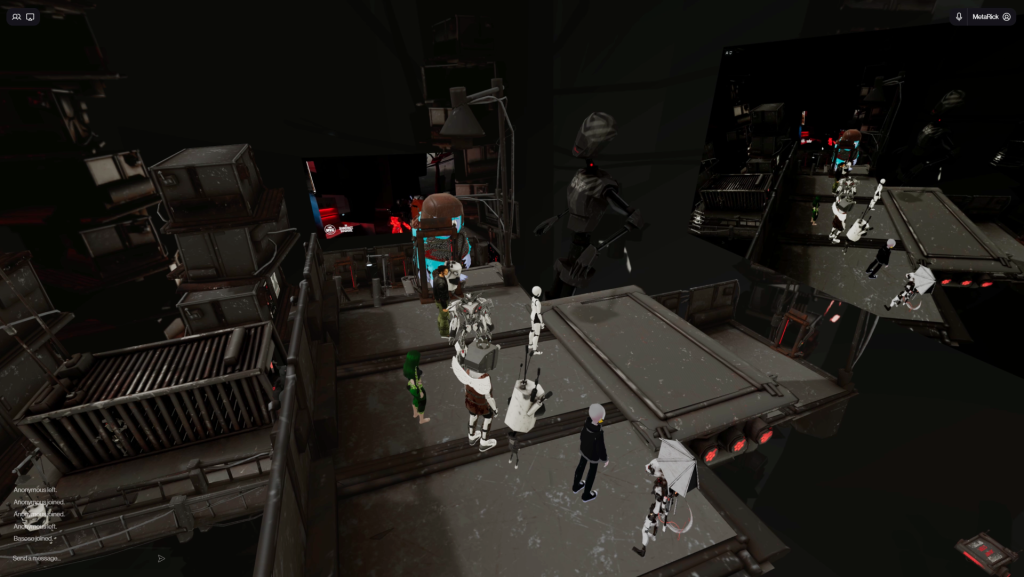
Exhibition commissioners and curators still need convincing
While artists and creators of immersive VR environments have of course been won over, curators and other commissioners or digital art exhibitions have yet to be convinced, as they are often skeptical of online exhibition principles that break with the essentially physical nature of the artistic experience, even if it originates in virtual environments to begin with. However, new lines can change this approach, according to Charles Carcopino, new artistic director of Grand Palais Immersif, when asked about the relevance of online exhibitions. “I find this format particularly interesting when it proposes, as Standart, a young French company, does, for example, to archive past exhibitions and offer a new way of visiting them,” he admits. But these visits are no substitute for a visit to an exhibition. On a personal note, I was unhappy during the pandemic to see all cultural projects transformed into online events. That’s what I like about immersive venues like GPI: unlike most VR projects (with a few exceptions), the experience remains collective and physical.”
Charles Carcopino is convinced that the immersive experience needs to be lived in real life, as it is regularly housed in large spaces that allow free wandering, and he also recognizes the technical progress made in recent times to make virtual exhibitions more relevant. “I had the chance to visit the Elektra Museum Studio, a series of VR exhibitions created in Montreal in conjunction with the Elektra Biennial, which unfold in a physical space, giving visitors the experience of walking through the works. I was impressed by the quality of restitution and their (im)materiality. So I think that an online exhibition, if it’s well thought-out, and uses all the mediation assets, can enable a type of exhibition that’s considerably enriching compared to a simple normal visit.”
Whether physical or online, the red lines of immersive VR digital creation are just waiting to be crossed by all those involved – artists, programmers, curators, spectators – in the total artistic experience it conveys.

